2025 Author: Erin Ralphs | [email protected]. Last modified: 2025-01-22 21:14:09
Almost every car owner, especially of domestic production, is familiar with the problem of noise penetrating the cabin through the bottom or arches. Some drivers do not try to deal with this at all, while others, on the contrary, strive to make their car as comfortable as possible.
Until recently, the only solution was the use of noise and vibration isolation, which is a special bituminous mats. You need to glue them on the bottom from the passenger compartment, disassembling it completely, into arches - only from the inside, which, you see, is not very convenient and fast. In addition, laying such material requires warming it up.
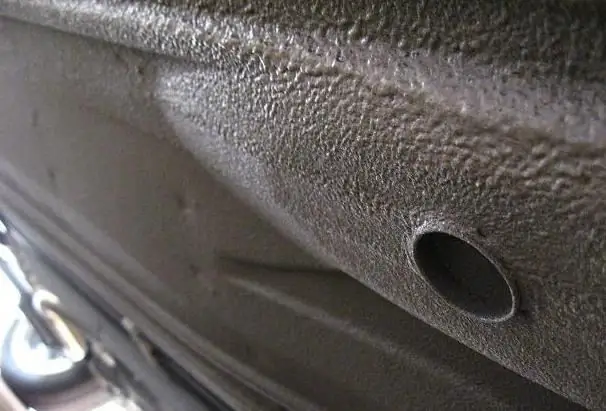
However, about five years ago, a great alternative to them appeared on the markets - liquid car soundproofing. Feedback from car owners shows that it is not only more convenient to apply to body parts, but also significantly more effective than the usual "shumka". What it is, what types of it are on sale and how to use it, we will talk in this article.
What is the essence of liquid soundproofing
Liquid noise insulation is a special product made on various bases (bitumen, rubber) designed to reduce noiseand vibrations inside the car. In addition, this product has excellent protective properties that prevent corrosion of body elements. It can be applied to both internal and external surfaces of the bottom and arches, and can also be used in combination with conventional bituminous soundproofing. In this case, the effect of sound and vibration absorption will be the highest.
Liquid car soundproofing: reviews and benefits
Those owners of cars who have experienced the effect of liquid "shumka" on their car unanimously declare its high efficiency. Thrifty drivers see a certain benefit here, consisting in the absence of the need to spend money separately on anti-corrosion treatment, and separately on soundproofing.
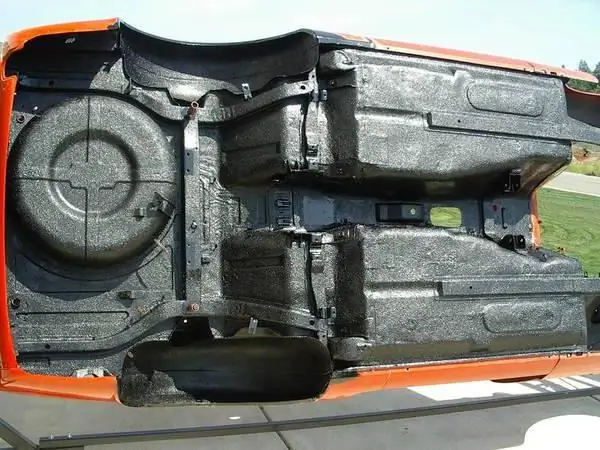
In addition, any liquid soundproofing of a car has a number of advantages over the usual one. Here are just a few:
- high sound absorption capacity;
- long service life;
- easy to apply to any surface;
- weights the car by no more than 15 kg, while bituminous increases the weight of the car by 50-60 kg;
- being applied from the outside, additionally protects the car body from the harmful effects of gravel, water and road chemicals;
- resistant to temperature extremes and mechanical stress;
- can be dyed to match car color;
- composition of the product is completely safe for the he alth of the driver and passengers.
Varieties of liquid soundproof materials
We sell liquidsound insulation is represented by the following products:
- various bituminous mastics;
- NoiseLIQUIDator;
- Nuxodol 3100;
- "Dinitrol 479";
- "Prime Anti-Noise".
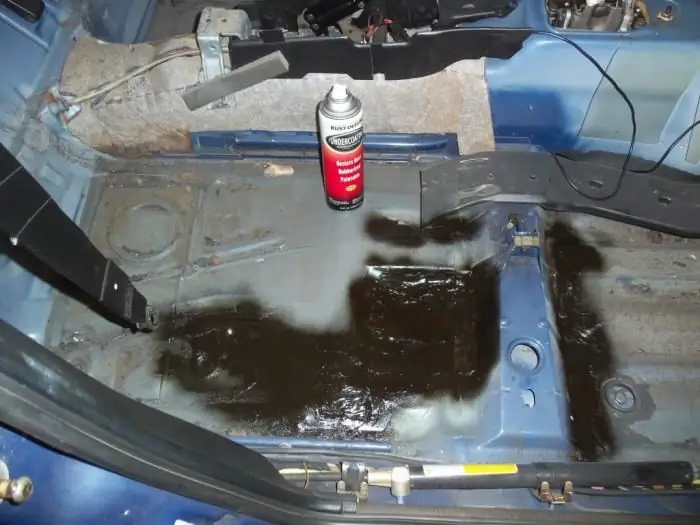
Let's take a closer look at what this product is.
Rubber bitumen mastics
Rubber-bitumen mastic - a product consisting of a solution of bitumen and rubber (rubber) with the addition of alkyd resins and plasticizers. The range of these products is quite wide, however, none of them falls short of the ideal due to the final state of the dried mortar. Unfortunately, this liquid car soundproofing does not completely harden, making it more like a rustproof coating. The most common rubber-bitumen mastics in our markets are "Kord", "Kordon", "BPM-1", "BPM-97".
NoiseLIQUIDator
NoiseLIQUIDator is a good Russian-made vibration-absorbing mastic, used mostly for arches, although it is also suitable for the bottom. It consists of two synthetic components: a base and a hardener, mixed in certain proportions immediately before starting work. Can be used for noise reduction of ribbed metal surfaces: bottoms, ararocks, sills, etc. Not recommended for application on plastic.
Applied by hand with a spatula. The hardening time of one layer is a day.
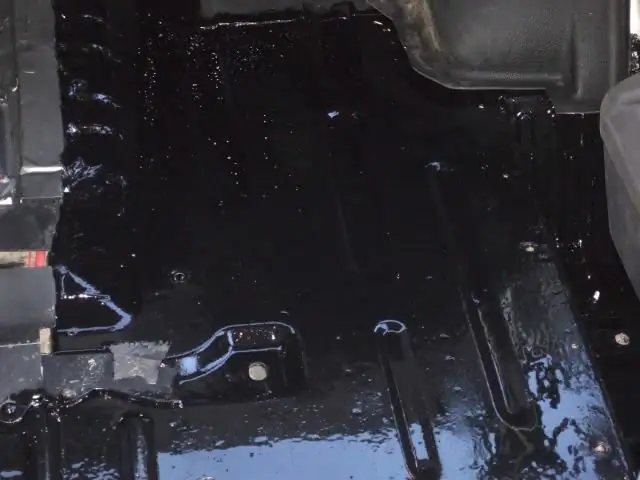
Nuxodol 3100
Nuxodol 3100 is a Swedish-made pasty liquid sound insulation. It has excellent soundproofing, vibration damping, anti-abrasive and water-repellent characteristics. Can be applied to metal and plastic surfaces with a brush, roller or sprayer. Preliminary drying - 10-12 hours, full - 1-2 weeks. After drying, it takes the form of a solid polymer film. Perfectly painted with car enamels.
Dinitrol 479
"Dinitrol 479" is the most popular and widespread liquid sound insulation in our country. Feedback on its use is extremely positive. It is also produced in Sweden. "Dinitrol 479" combines three functions at once: protection against gravel, prevention of corrosion and sound insulation. Sometimes it is also called "liquid fender liner", as it is often used specifically for processing arches. Can be applied with a trowel, brush or roller. Total drying time - 12 hours.
Prime Anti-Noise
Liquid soundproofing "Prime Antishum" is a universal tool that simultaneously protects the body from corrosion and reduces the level of noise coming from under the car.
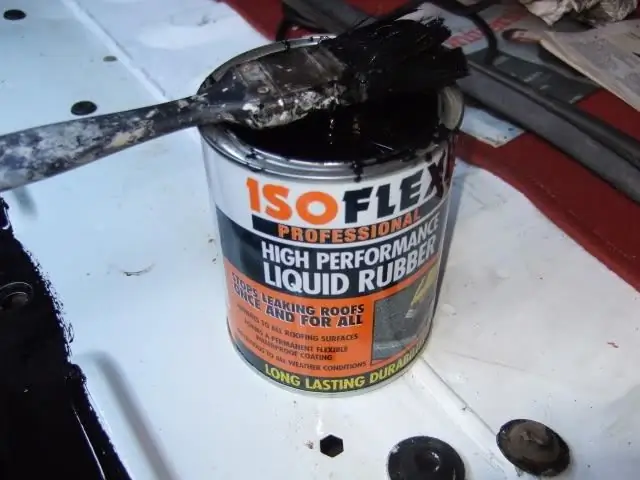
It contains white spirit, modified bitumen, perlite, synthetic resin, crumb rubber, aluminum and zinc powders, and corrosion inhibitors. The product is absolutely odorless and completely safe for he alth. It has high soundproofing, anti-gravel and anti-corrosion properties. Sold inin the form of an aerosol in canisters. "Anti-noise" can be used to "blow out" hard-to-reach places (hidden cavities of doors, thresholds, spars).
Liquid soundproofing: price
If you decide to turn to a specialized center to make your car more resistant to road noise, be prepared for the fact that you will be asked to choose the materials yourself. It’s worth mentioning right away: you don’t have to give preference to cheap products, since you will need more of them, but they won’t last long, and the effect will not be the same. It is better to choose a product of some well-known brand.
As for the price of soundproofing the bottom and arches, on average it ranges from 4 to 10 thousand rubles. Processing only the arches will cost from 1000 to 2000 rubles, depending on the material and the number of layers applied.
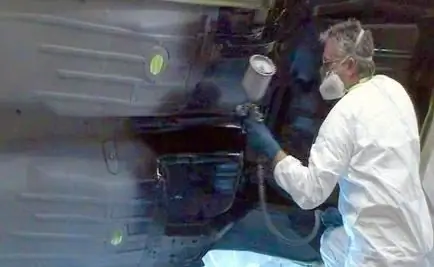
How to make liquid noise insulation with your own hands
And now let's talk about how to apply such a tool as liquid sound insulation with your own hands. It's not that much of a hassle. First you need to decide where it will be applied: on internal or external surfaces. Further, based on this, select the appropriate tool and make a calculation of its quantity. It is better, of course, to treat the car from the outside first, because inside it will be possible to make additional sound insulation even with bituminous mats, even with the means described above.
Before starting work, surfaces must be thoroughly washed with hot water, then cleaned of rust and degreased. Onlyafter that, you can start applying sound insulation with a spatula, brush or spray. Well, if it is enough for several layers. In this case, apply a second coat only after the first one has completely dried.
Allow the product to dry completely before using the vehicle. It may take 1-2 weeks, but it's worth it.
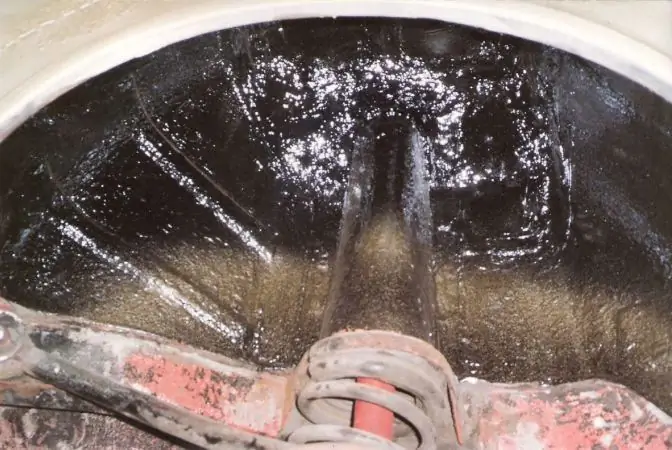
Helpful tips
In preparation for self-treatment of the car with liquid soundproofing, use these tips:
- Don't buy cheap materials from obscure outlets. Instead, visit a specialized store, where you will also be advised on the correct use of the product you have purchased.
- Pay maximum attention to washing and cleaning the surfaces to be treated - only in this case your work will give a good result.
- Before processing, remove the wheels of the car and isolate the hubs with pads with polyethylene to prevent mastic from getting on them.
- Do not process at temperatures below 10 oC - the mastic will harden much longer.
- Never mix different products.
- Do not apply in a thick layer. It is better to make several layers, waiting for each of them to dry completely.
- If the processing seems impossible to you, contact a specialized service center.
Recommended:
Proper do-it-yourself car soundproofing - features, technology and reviews

Only premium cars have really high-quality sound insulation. The rest are quieted rather mediocrely, if they paid attention to this moment at all at the factory. However, soundproofing a car with your own hands is not so difficult. True, it will take a lot of effort, free time and materials. But first things first
What is required for car soundproofing and how to do it

Starting the process of soundproofing a car should be a rather laborious operation. From the cabin you need to remove everything that is in it, leaving ideally only metal surfaces
Do-it-yourself complete soundproofing "UAZ Patriot": list of required material and reviews

Agree that it is very difficult to enjoy the ride when you hear a constant rumble in the cabin from the friction of the wheels on the asph alt, from the noise of the engine, the sound of rain on the roof and just various bryakot in the cabin. This article will focus on the installation of sound insulation on the UAZ Patriot car, which is famous not only for its all-terrain capabilities, but also for the constant noise in the cabin
Painting a car with liquid rubber: reviews, prices. Which company to buy liquid rubber for painting a car: expert opinion

Liquid rubber for cars is vinyl. It is also called rubber paint. This coating option is a real alternative to car enamels, which are used today for painting cars. This technology is innovative, but today many motorists have already tested it
Liquid rubber for cars: reviews, price, results and photos. How to cover a car with liquid rubber?

Liquid rubber is a modern multifunctional coating based on bitumen. It is easier to cover a car with liquid rubber than with a film - after all, the sprayed coating does not need to be cut, stretched in shape, and then the bumps removed. Thus, the cost and time of work are optimized, and the result is qualitatively the same

